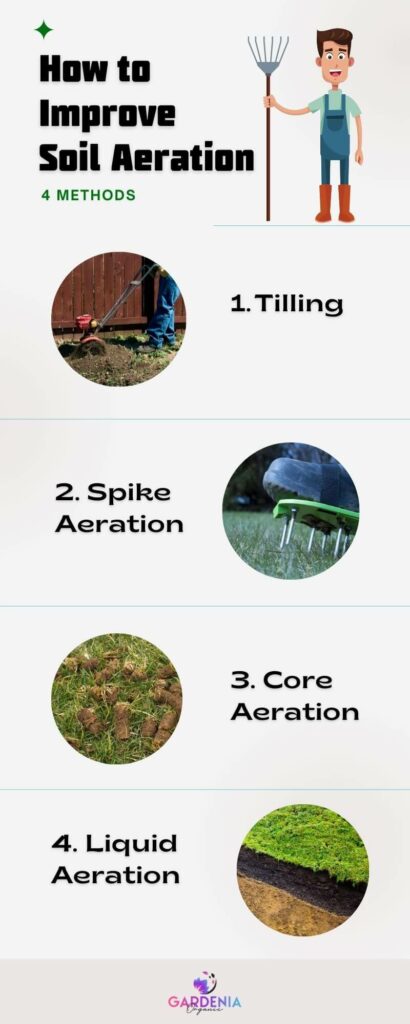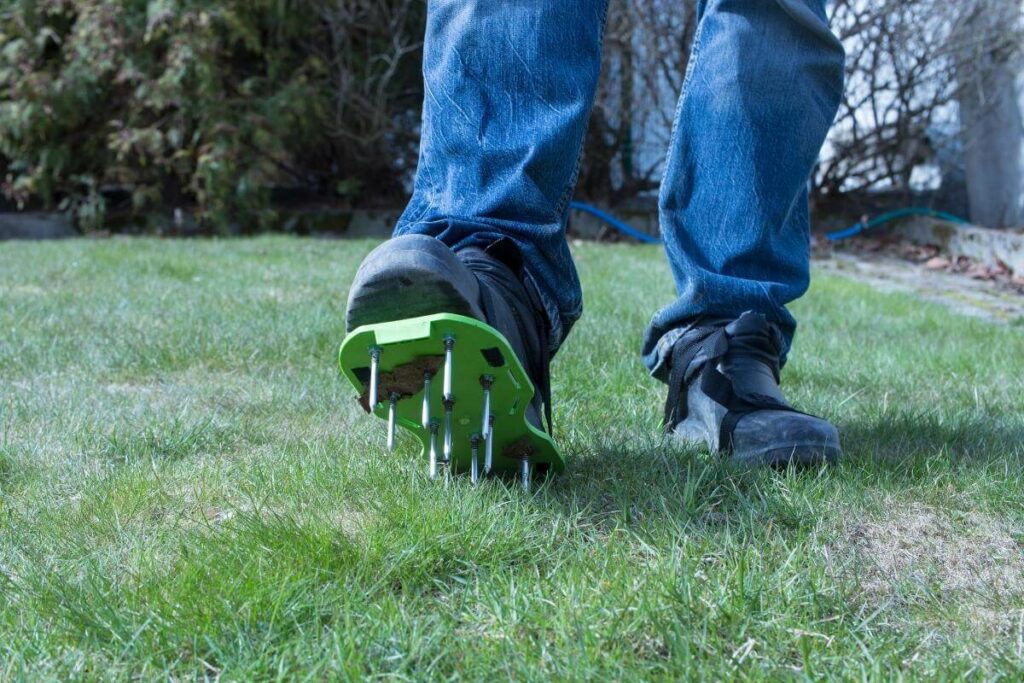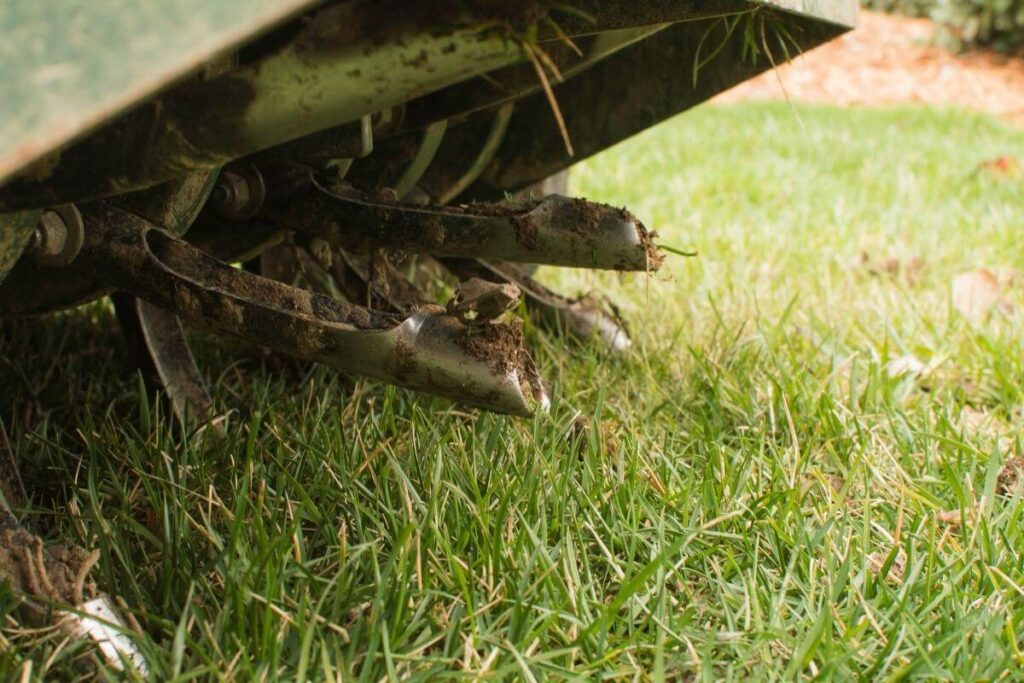Taking care of plants is difficult work.
Each plant needs a different amount of sunlight; whether direct or indirect, the proper amounts of water, and the right type of soil.
In addition to the picky needs of each plant, they also need aerated soil to survive.
How can you improve soil aeration?
Aerating the soil involves adding oxygen for your plants to absorb. You can do this by turning over the top layer of soil, by creating holes for oxygen to penetrate the ground, or by adding wetting agents to improve the oxygen levels for the plants.
Why Does Soil Need to be Aerated
Everyone knows that plants need water and sunlight to grow, but not everyone realizes that plants also need oxygen.

The only way plants can take in oxygen is through their roots, and that’s hard to do when there isn’t much oxygen in the ground.
Soil also needs to be aerated to give roots room to grow.
If the soil is too heavily compacted, a plant’s root system won’t be able to grow properly, and won’t be able to absorb nutrients as well as it should.
Sad But True: Without proper aeration, plants will die. That’s a less than favorable outcome whether you’re growing crops or decorative houseplants.
Causes Of Poor Soil Aeration
Now that you know why you should be aerating your soil, let’s take a look at what causes poor aeration so you have a better idea of how to fix it.
The following factors can lead to compact soil, poor oxygen content, and high levels of carbon dioxide:
- Grazing fields: Letting livestock graze in a field is great for the soil’s fertility, but constant grazing means constant walking. This compacts the soil so oxygen can’t get in. If you want to let your livestock graze, consider rotating the pastures they are in.
- Machine traffic: Similar to grazing animals, heavy machine traffic will compact the soil. Moving heavy machines across soil used for growing should be limited, and they shouldn’t be moved across wet soil.
- Soil moisture: Excessive water from melting snow, rain, or even overwatering will fill the space between soil molecules, forcing the oxygen out. As the water evaporates and space is created between the molecules, oxygen will be able to penetrate the soil once again.
- Soil texture: Your soil composition is going to play a huge role in aeration. If you are using a soil blend with peat, your soil is going to be much looser than clay soil, and allow for more oxygen to enter into the soil.
4 Methods to Improve Soil Aeration
Knowing why your soil needs aeration and what causes poor aeration are both important, but how do you improve the aeration in your soil.

Below are methods to improve aeration in large fields, or even in a small potted plant.
1. Tilling
Tilling is our least recommended form of aerating your soil.
You use a shovel, broadfork, tiller, or even a rake to turn over the layer of topsoil, breaking compacted parts down into smaller pieces, and most importantly adding oxygen to the soil.
Tilling is highly destructive and can have adverse effects on the soil.
Sure, it’s adding oxygen, but it’s also destroying microorganisms living in the soil, it dislodges seeds from weeds, and it shreds root systems.
Watch Out: If you’re using a gas-powered tiller, you’re even polluting the air around the soil while you’re aerating it.
2. Spike Aeration
Spike aeration makes punctures in the ground for air to enter.

You can use these tools to aerate the soil:
- aeration shoes
- rollers
- mower attachments that have spikes on them
If you have a small garden or lawn, aeration shoes are going to be the easiest to use.
If you have a lawn that needs to be done, a roller or mower attachment will work better depending on the amount of space you need to cover.
This technique is best for sandy soils.
The soil will need to be displaced when the hole is created, and sandy soil won’t become compacted as the particles are pushed together.
Spike aeration is not recommended on soils with large amounts of clay for this reason.
This is also the best method for potted plants. Instead of using a boot, use a chopstick, or something that’s a similar size to poke holes into the dirt.
What To Avoid: Be careful not to damage the roots or you could do more harm than good.
3. Core Aeration
Have you ever been on a football field, and noticed small, hard cylinders that look a little bit like… poop?

Good news! It’s not poop. They are little plugs of soil that were taken out of the ground for core aeration.
Instead of piercing the soil like spike aeration, core aeration pulls out these plugs to make room for oxygen.
Leaving the cores behind is a messy choice, but it has its advantages. The nutrients and microorganisms aren’t being completely removed from the area and can return deeper into the ground without being destroyed.
As the layer of cores begin to break down, they become the new top layer of soil that the grass will grow through.
More oxygen can penetrate this layer because the grass, thatch, and roots have added organic matter into the soil and giving the soil much-needed space for oxygen.
Core aeration is usually done on large lawns or sports fields.
Did You Know? The soil underneath the grass doesn’t need to be nutrient-rich for plants, and it’s often an extremely dense, clay-based soil which is the ideal soil type for core aeration.
4. Liquid Aeration
Liquid aeration works differently than the other methods.
Instead of adding a means for oxygen to penetrate the soil better, a wetting agent is added to the soil.
A wetting agent reduces the surface tension of the soil, allowing water to pass through more easily.
Now, it might sound counterintuitive to want more water when you’re trying to get more oxygen, but this does improve soil aeration.
When you add a wetting agent, water can reach deeper into the soil. Wetting agents usually also come with nutrients that microorganisms need to survive.
Even Better: This means that the microorganisms will also dig deeper. As the microorganisms, and worms dig deeper, they are aerating the soil.
Final Thoughts
There you have it. Another condition your plants need to survive, but just as important as sunlight and water.
Now you should have a pretty good understanding of why your soil should be aerated, how to aerate it, and if you haven’t done so already, you should probably go do it!
Also Good To Know
- Will Aerating a Lawn Help with Drainage?
- How to Fix Hydrophobic Soil in Your Home
- How Much Compost to Mix with Soil


